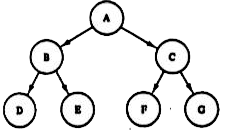The four daughter cells produced at the end of meiosis as tetrad are genetically
dissimilar
similar
enucleated
clones
The correct Answer is:A
Step by step video, text & image solution for The four daughter cells produced at the end of meiosis as tetrad are genetically by Biology experts to help you in doubts & scoring excellent marks in Class 12 exams.
Updated on:21/07/2023Topper's Solved these Questions
Similar Questions
What is nature of daughter cell produced by meiosis?
View SolutionCell division by meiosis is completed through __________stages. Recombination during meiosis occurs between _________ chromosomes._____________ resembles the process of mitosis. During meiosis-I , two __________ daughter cells are formed, whereas during meiosis-II, _____________ haploid cells are formed. All daughter cells formed through meiosisare genetically___________ with respect to present cells dueto genetic recombination.
View Solution
Knowledge Check
Four daughter cells formed after meiosis are
AGenetically similarBGenetically differentCAnucletateDMultinucleateFour daughter cells formed after meiosis are
AGenetically similarBGenetically differentCAnucleateDMultinucleateHow many haploid cells are formed at the end of meiosis II?
AFourBEightCTwoDSix
56 cells are produced in meiosis in which
View SolutionHow would the daughter cell at the end of mitosis and cytokinesis compare with their parent cell when it was in G1 of the cell cycle?
View SolutionD, E, F and G are the four daughter cells resulting when cell A undergoes meiosis as shown in the following diagram. If no crossing over has occurred which cells listed below, if any, are genetically identical?

View SolutionThe four haploid nuclei found at the end of meiosis differ from one another in their exact genetic composition, some of this difference is the result of
View SolutionThe four haploid nuclei found at the end of meiosis differ from one another in their exact genetic composition. Some of this difference is the result of-
View Solution

